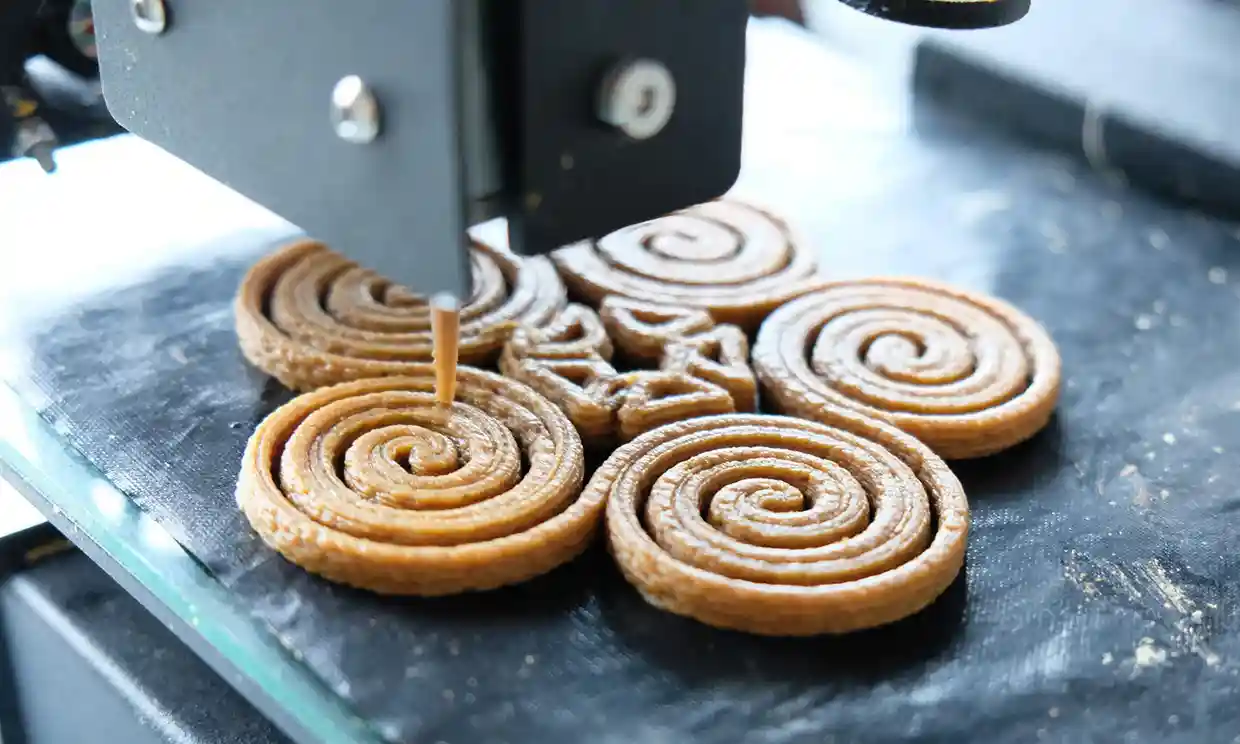3D food printing. 3D food printing industry. 3D food printing. 3D food printing industry. 3D food printing. 3D food printing industry.
3D printers are nowadays widely used – to create airplane pieces, buildings, furniture, prosthetics, etc. Many companies focusing on reaching high levels of corporate innovation are taking advantage of their ability to quickly make prototypes and implement fast design changes.
Believe it or not, 3D food printing has been taken one step further in creating different types of edibles in the industry. Companies can create new tastes with many health benefits for consumers, as well as for the environment. Furthermore, it meets all the different types of dietary needs and prevents overproduction in the food industry.
You may think this innovation is still in the production stage industry, but in reality, there are already many 3D printers available – for professional and personal use.

Source: Upprinting food
Thanks to Novable, our Agents were able to find many companies using 3D printing solutions to create food, promoting the implementation of innovative ideas, and finally leading to greater corporate innovation. Here is a list of the ones we selected for this specific article:
This innovative company was founded in 2018 in Israel and is set on changing the meat market. The system offers a pioneering solution for fast-moving kitchens. You can customise the perfect meatless burger and in the near future delicious meatless kebabs and steaks. They are even trying to experiment with alternative seafood, which can be a very interesting way to reach corporate innovation. You can make your plant-based burger as protein-rich and low-fat as you want, and meet your medical conditions, all through their website.
Foodini was created within the Natural Machines company. The original idea of setting up this 3D food printer is inspired by the desire to cut down manufacturing and distribution costs, therefore investing in corporate innovation. “A 3D printer is a mini-manufacturing device. The premise of all 3D printers is the user becomes the manufacturer, maker, creator”, as they explain on their website. With Foodini all you need to do is prepare the filling, fill a capsule and print your creation.
This 3D printer is available in different sizes to serve both professional and hobby bakers (mycusini). All you have to do is fill a stainless steel cartridge with the desired product (chocolate, marzipan, etc.) and insert it into the machine. Procusini offers over 1,000 innovative templates to create letters, hollow shells, and numbers, requiring no programming knowledge. Additionally, you may book their services for a live event.
The nūfood 3D food printer combines food and technology to give you the ability to create a futuristic and innovative taste. The process is as simple as it gets: open the app, add your flavors, and push print. This way, you can enjoy your own 3D food in no time. This printer creates liquid-based flavors from sweet to savory working with vegan-friendly and high-quality ingredients. The best part about it? They have a whole section dedicated to cocktail recipes on their website. Although it was originally developed in Cambridge (UK), the nūfood 3D printer is today present in several countries in the world. They also give the possibility to rent a printer for your events.
NOVAMEAT develops cutting-edge technological solutions to feed the planet’s growing population. Why? To overcome the challenges of today’s inefficient and unsustainable animal agriculture industry. Their mission is to create a healthy, efficient, humane, and sustainable food supply system, focusing on plant-based options. The idea is to deliver a realistic, textured plant-based meat prototype. To do so, they use ingredients such as pea and rice isolates, extra-virgin olive oil, brown seaweed extract, and beet juice concentrate. Moreover, the company is currently testing alternative proteins, fibers, and oils to take sustainability and innovation to the next level.
Food printers may not be a quick fix for all the issues faced by professional restaurants and bakeries. However, they represent a fantastic tool if you accept the limitations of this new technology in the same way that you have accepted the constraints of all prior cooking techniques.
What is your opinion on the topic? Let us know what you think on LinkedIn!
[…] 3D printing has brought a lot of innovation to the field. Discover how it is now possible to print edible food and reach corporate innovation […]